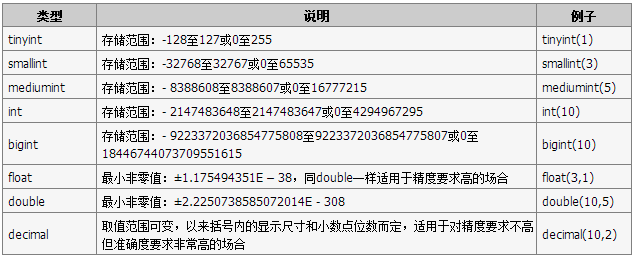Home >Database >Mysql Tutorial >Summary of common SQL statement usage methods in MySQL
Summary of common SQL statement usage methods in MySQL
- 大家讲道理Original
- 2017-02-11 14:51:141714browse
Create user
CREATE USER 'root'@'%' IDENTIFIED BY 'password';
Create user and grant specified permissions
grant create,select,update,insert,delete,alter on bbs.* to lvtao@localhost identified by 'password';
Create user and grant full permissions
Grant all privileges on *.* to 'root'@'%' identified by 'password' with grant option;
Create backup user
GRANT SELECT,RELOAD,SHOW DATABASES,LOCK TABLES,EVENT,REPLICATION CLIENT ON *.* TO 'bak'@'localhost' IDENTIFIED BY 'password';
Back up all databases
mysqldump -u root -p --all-databases --ignore-database=performance_schema --ignore-database=information_schema --skip-lock-tables > /home/db.sql
Export a database structure
mysqldump -u root -p -d –add-drop-table database >/home/db.sql
Restore data
A:常用source 命令 进入mysql数据库控制台, 如mysql -u root -p mysql>use 数据库 然后使用source命令,后面参数为脚本文件(如这里用到的.sql) mysql>source wcnc_db.sql B:使用mysqldump命令 mysqldump -u username -p dbname < filename.sql C:使用mysql命令 mysql -u username -p -D dbname < filename.sql
Create database
create database <数据库名>;
Display all databases
show databases;
Delete database
drop database <数据库名>;
Select database
use <数据库名>;
View the currently used database
select database();
Table information contained in the current database:
show tables;
Create table
create table <表名> ( <字段名1> <类型1> [,..<字段名n> <类型n>]); mysql> create table MyClass( > id int(4) not null primary key auto_increment, > name char(20) not null, > sex int(4) not null default '0', > degree double(16,2));
Get the table structure
desc 表名,或者show columns from 表名 mysql>DESCRIBE MyClass; mysql>desc MyClass; mysql>show columns from MyClass;
Delete the table
drop table <表名> mysql> drop table MyClass;
Insert data
insert into <表名> [( <字段名1>[,..<字段名n > ])] values ( 值1 )[, ( 值n )] mysql> insert into MyClass values(1,'Tom',96.45),(2,'Joan',82.99), (2,'Wang', 96.59);
Query the data in the table
1)、查询所有行 命令: select <字段1,字段2,...> from < 表名 > where < 表达式 > 例如:查看表 MyClass 中所有数据 mysql> select * from MyClass;2)、查询前几行数据 例如:查看表 MyClass 中前2行数据 mysql> select * from MyClass order by id limit 0,2; 或者: mysql> select * from MyClass limit 0,2;
Delete the data in the table
delete from 表名 where 表达式 mysql> delete from MyClass where id=1;
Modify the data in the table
update 表名 set 字段=新值,… where 条件 mysql> update MyClass set name='Mary' where id=1;
Add a field to the table:
alter table 表名 add字段 类型 其他; mysql> alter table MyClass add passtest int(4) default '0'
Change the table name:
rename table 原表名 to 新表名; mysql> rename table MyClass to YouClass;
Update field content
update 表名 set 字段名 = 新内容update 表名 set 字段名 = replace(字段名,'旧内容','新内容'); 文章前面加入4个空格update article set content=concat(' ',content);
Update field part string
update contents set `text`=REPLACE(text,'http://www.lvtao.net','https://www.lvtao.net')
Field: Numeric type
Field: String type

Field: Date type
Statement:
The content of this article is voluntarily contributed by netizens, and the copyright belongs to the original author. This site does not assume corresponding legal responsibility. If you find any content suspected of plagiarism or infringement, please contact admin@php.cn

